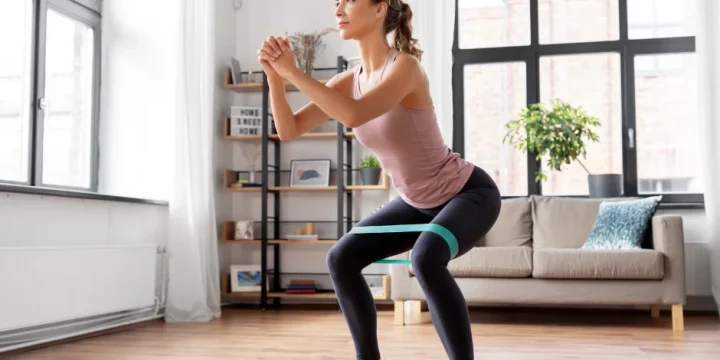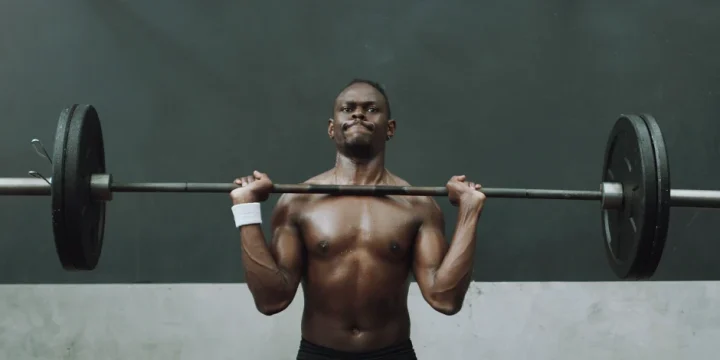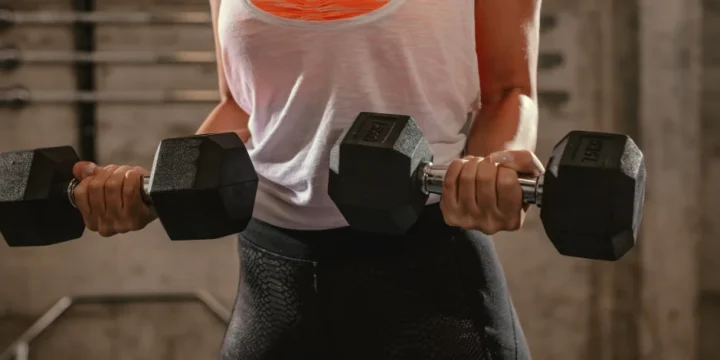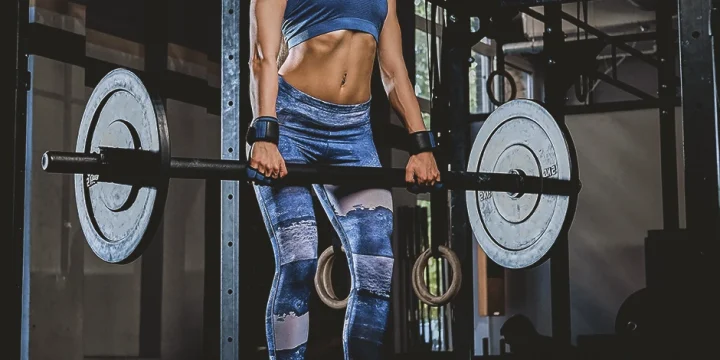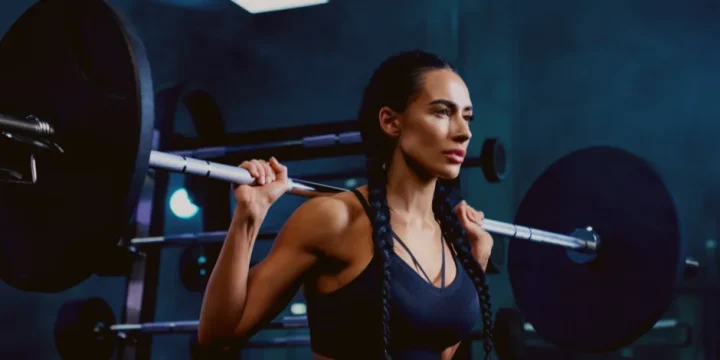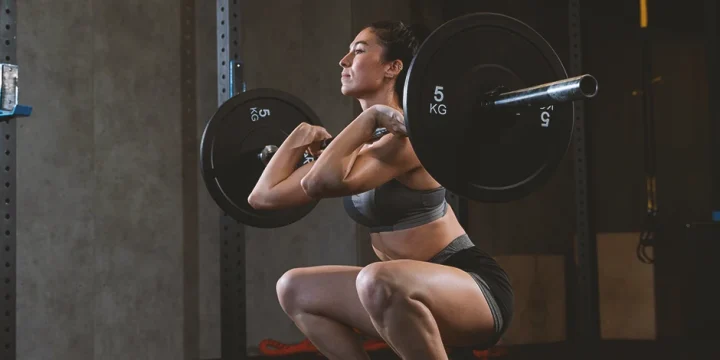Throughout my extensive experience as a personal trainer spanning over 10 years, I have encountered numerous leg exercise variations that can accelerate leg muscle growth and strength development.
Among these, lateral lunges are highly effective for toning, strengthening, and enhancing leg flexibility.
To ensure optimal results from this exercise, our comprehensive guide will instruct you on the proper technique, enabling you to maximize its benefits.
Having a high-quality adjustable kettlebell or dumbbell can enhance leg muscle development when performing lateral lunge exercises.
If you are wondering how to do lateral lunges, here are my findings after I spent months monitoring the effects that my clients have experienced.
Quick Summary
- To perform a lateral lunge, stand with feet shoulder-width apart, take a wide step to the right side, bend the knee, and push the hips back into a lunge position.
- Lateral lunges target the inner thigh muscles and the outer glutes and hips, improving lower muscle strength and stability.
- Radiopaedia's study shows lateral lunges significantly engage the lunging leg's lateral quadriceps and the opposite leg's hamstrings, crucial for stability during descent and aiding in upward movement.
- In my professional opinion, lateral lunges offer the benefit of improving hip mobility and flexibility, making them an excellent exercise choice for enhancing functional movement patterns and reducing the risk of injuries.
How to Do Lateral Lunges Correctly?

To do lateral lunges correctly, begin by standing with your feet positioned shoulder-width apart.
Next, step towards the right side while bending your knee and pushing your hips back into a lunge position.
It is crucial to maintain proper alignment and control throughout the entire movement.
Lateral lunges, or side lunges, are a great workout for strengthening leg muscles and improving flexibility.
Mastering this exercise can help boost athletic performance and prevent injury. Here's how to perform side lunges correctly:
- Begin in a standing position with your feet hip-width apart and parallel to each other.
- Step left leg out to the side keeping your toes pointing forward.
- Bend the knee of the stepping leg while keeping your other leg straight. Your bent knee should be aligned with your toes. Repeat the process with the right leg.
"If you're looking to sculpt and shape your legs, lateral lunges are a must-do exercise. They target specific muscle groups in the lower body, helping you achieve toned and defined thighs, glutes, and hips."
- Dr. Jessica Roberts, Fitness Expert
Side Lunge Variations

There are several variations of side lunges that I always incorporate into my clients' workout routine to add variety and target each muscle groups.
Here are a few examples:
Weighted Side Lunge
Take starting position, and with feet hip-width apart, hold a dumbbell or kettlebell in the hands in front of your chest or by your sides while performing side lunges.
If you add weight, it can increase the intensity and challenge your muscles further.
Side-to-Side Side Lunge
Instead of returning to the starting position after each lunge, transition directly to the opposite side for a continuous side-to-side motion.
This variation adds a dynamic element to the exercise and increases the cardiovascular demand.
Related: Side Lunges Stretches
Sliding Side Lunge
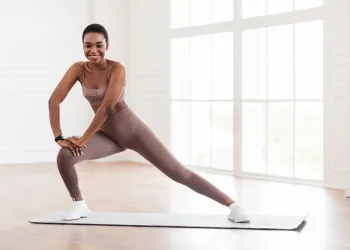
Use a slider or a towel under one foot as you perform side lunges.
Slide the left foot out to the side as you lunge, engaging the muscles in a different way and adding an element of instability, which requires additional core and stabilizer muscle activation.
Repeat the process with the right foot.
Jumping Side Lunge
Add a plyometric element by jumping explosively from one side lunge to another.
This variation enhances power, explosiveness, and overall lower body strength.
Note that when performing lateral lunge variations, it's crucial to maintain proper form throughout and engage core muscles as stabilizers.
Doing these exercises with improper posture may lead to injury or less effective muscle engagement.
Mistakes To Avoid When Performing Lateral Lunges and Its Variations
- Incorrect foot positioning: Ensure your feet are positioned correctly. The foot of the lunging leg should point forward, and your weight should be distributed evenly. Avoid turning your foot outward or inward, as this can strain your knee and ankle.
- Overextending the knee: When lunging to the side, be careful not to extend the knee of your lunging leg beyond your toes. Overextending can put unnecessary stress on your knee joint. Instead, focus on sitting back into the lunge, keeping your knee aligned with your foot.
- Neglecting posture and core engagement: Maintain a straight back and avoid leaning too far forward or hunching over. Engage your core throughout the movement to help stabilize your body and protect your spine.
- Not going deep enough: To fully engage the glute and thigh muscles, it's important to lunge deep enough. However, this should be within your comfort range and without compromising form. If you're not feeling the exercise in your glutes and thighs, you might not be lunging deep enough.
- Rushing through the movement: Performing side lunges too quickly can lead to loss of form and reduced effectiveness. Take your time with each lunge, focusing on controlled movements. This ensures proper muscle engagement and reduces the risk of injury.
What Are Lateral Lunges?
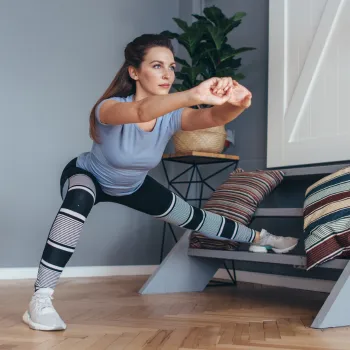
Lateral lunges are a type of lower body exercise that targets the hamstrings, inner and outer thighs, and glutes.
Side lunges, unlike the usual forward or backward lunges, involve a sideways step. You bend the leading leg's knee while keeping the other leg straight or slightly bent.
They're a smart choice for your workout, especially if you've got leg imbalances.
Unlike different variation of squats that work both legs together, side lunges focus on each leg separately, helping to even things out.
Focusing on one leg at a time can strengthen your stabilizing muscles, enhance your balance, and establish symmetry between both legs.
Our research confirms that performing side lunges daily has significant benefits for individuals who walk long distances or participate in sports activities.
Benefits of the Lateral Lunge

In my years of experience, I've noticed that performing lateral lunge offers a range of benefits that contribute to increased strength, agility, balance, and flexibility.
Balance Enhancement
By regularly incorporating lateral lunge into your fitness routine, you can effectively enhance overall balance in the body.
This exercise activates the muscles that help maintain a stable equilibrium.
Strengthens Lower Body
Engaging in side lunges frequently will help strengthen the muscles present in the lower body such as glutes, quadriceps, and hamstring muscles.
It increases their strength and improves their range of motion, reducing the risk of injuries.
Core Muscle Engagement
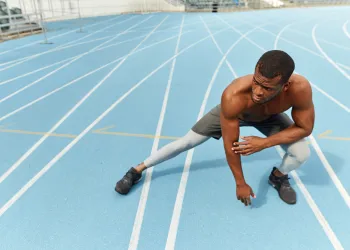
Lateral lunges target the lower muscles and engage the core muscles.
These important postural muscles are crucial in making side lunge beneficial for core training.
Our test results showed this could help you in everyday activities, too.
Also Read: Best Exercises For Core Strength And Stability
Improves Flexibility
Lateral lunges help improve flexibility by targeting tight hip flexors, which helps reduce joint pain and knee pain.
What Muscles Do Side Lunges Work?

Muscles that work during side lunges exercise are the inner thigh muscles and outer (adductors and abductors), upper gluteal muscles, quadriceps, hamstrings, and core muscles (abdominals and obliques).
Side lunges are a great way to target specific muscles in the lower body.
The exercise works by engaging various muscles that are important for balance, stability, and strength.
Here, we explore the different muscles involved in side lunges and how they are activated during the exercise.
- Quadriceps: During lunging movements, exercises targeting the quadriceps muscles on the front of the thighs play a significant role. According to Radiopaedia, the lateral lunge places a greater emphasis on the lateral quadriceps muscles [1].
- Glutes: Side lunges engage various parts of the gluteal muscles, including the gluteus maximus, medius, and minimus, depending on the width of your step during the movement.
- Hamstrings: According to Radiopaedia, as you lunge down laterally to one side, your hamstrings on the opposite leg work hard to keep your body stable and balanced. As you come back up again, your hamstrings help initiate the upward movement [2].
In addition to targeting these specific muscle groups, side lunges also activate your core muscles to maintain stability throughout the exercise.
To achieve optimal results from side lunges, it is important to focus on maintaining proper form and technique. Keep your chest lifted, engage your abdominal muscles, and execute the stepping motion slowly.
Additionally, strive for an equal distribution of weight between the left foot and right foot.
FAQs
How Many Lateral Lunges Should I Do?
You should start with 2-3 sets of 10-15 repetitions on each side. Adjust the number of sets and repetitions according to your capability to maintain proper technique throughout the exercise and try to listen to your body.
Do Lateral Lunges Grow Glutes?
Yes, lateral lunge can contribute to the growth and development of the gluteal muscles, leading to their strengthening and boosting their growth over time. Side lunges primarily target the gluteus medius and gluteus maximus, the major gluteal region muscles.
References:
- https://radiopaedia.org/articles/quadriceps-muscles
- https://www.physio-pedia.com/Gluteal_Muscles
About The Author
You May Also Like
